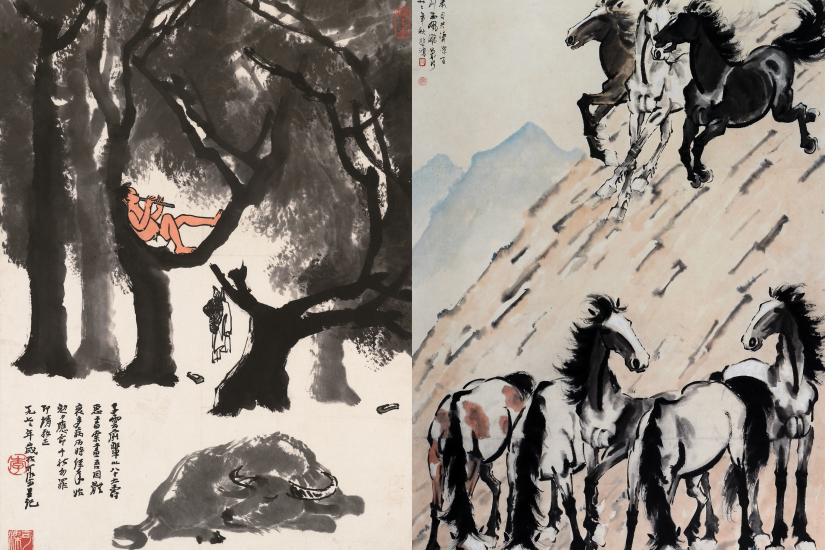Sun Museum presents a new exhibition “Animals in Ink,” showcasing nearly 40 ink paintings with animals as the main theme, including works by Qi Baishi, Ma Jin, Gao Qifeng, Xu Beihong, Ding Yanyong, Zhao Shao’ang, Li Keran, Rao Zongyi, Shi Lu, and Wu Hao, ten famous Chinese modern and contemporary painters, all selected from the Yitaoju collection. A star-studded lineup!
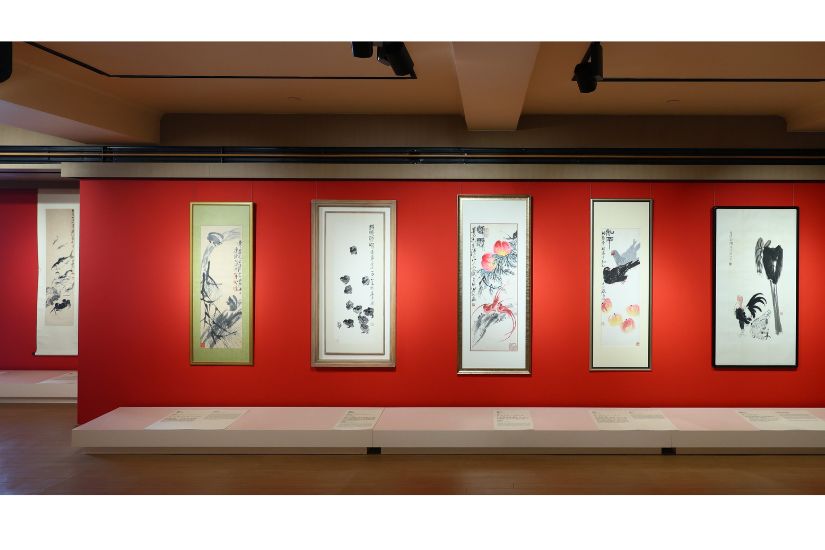
In Chinese ink painting, animal images are used as a unique artistic language and endowed with different symbolic meanings. This work includes various animals such as horses, cows, cats, squirrels, eagles, and chickens, showcasing the pursuit of skill and innovation in animal painting by Chinese ink painters in the 20th century.
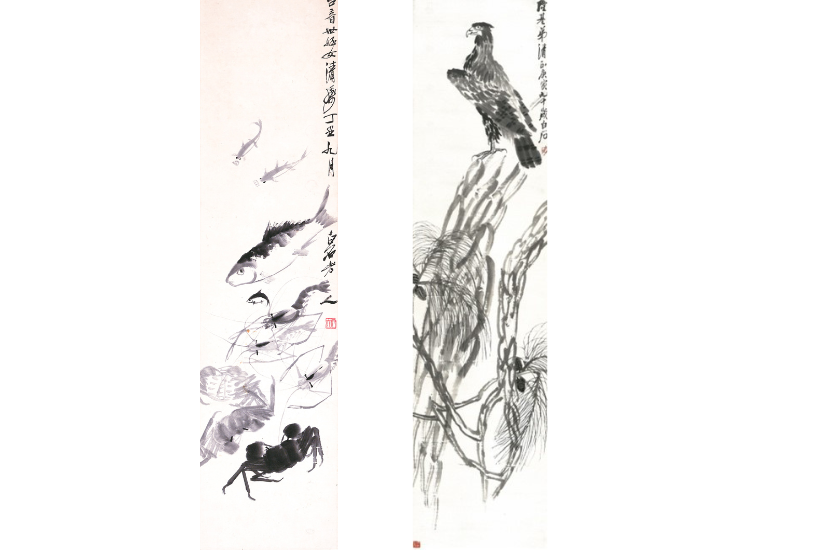
Various painters specialize in animal paintings. Qi Baishi excels in depicting shrimp, crabs, and birds, drawing inspiration from rural life. The animals in his paintings are lively and vibrant, exuding a simple and innocent charm, aiming for resemblance to the spirit rather than exact likeness. In his work “Fish, Shrimp, Crab,” the fish have bright eyes, the crabs are powerful and robust, and the shrimp float naturally in the water. At the age of 90, he painted “Pine Eagle” for Luo Longji, standing at 2.5 meters tall, with the giant eagle perched on a pine tree, its wings slightly trembling, eyes vivid, and majestic posture.
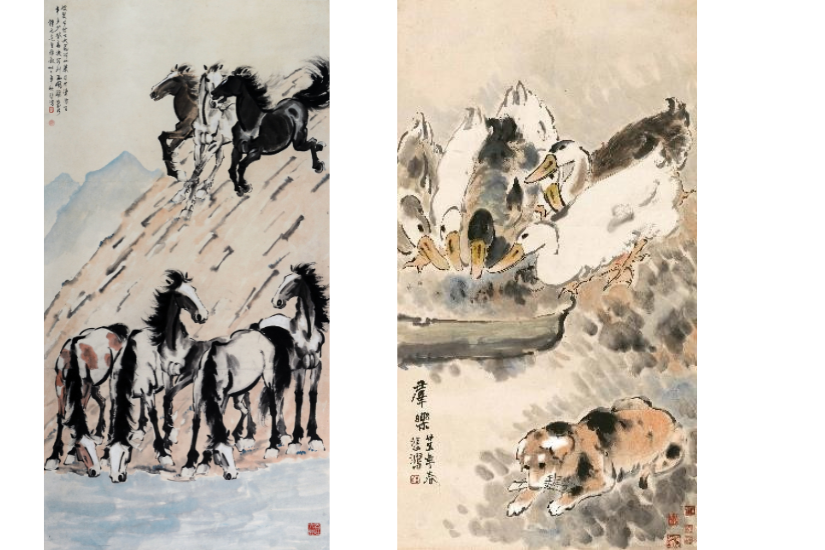
Xu Beihong is famous for his horse paintings, with his spirited and elegant horses displaying a variety of line changes, combining techniques from both Chinese and Western painting. The painting “Eight Horses” is rich in composition and balances movement and stillness, with the eight horses full of vitality. Through layers of ink, he depicts the flowing mane of the horses in the wind, as well as their strong muscles; he also uses light and shadow to highlight the majestic and free-spirited character of the horses. In the work “Harmony,” he combines the boneless technique and outlining method to portray the fluffy bodies of ducks and puppies. The puppies are depicted realistically, with accurate and lifelike postures.
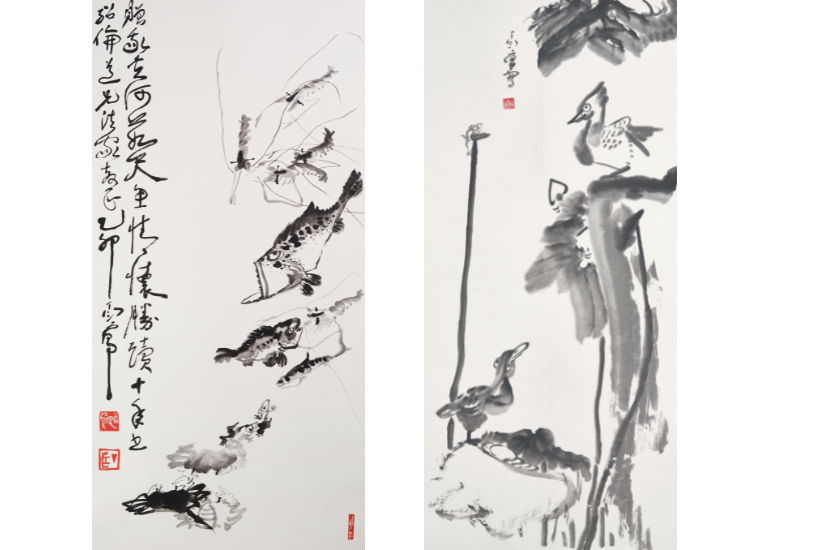
Ding Yanyong’s painting style combines Eastern and Western elements, focusing on lines and often using a more flat composition with unique layouts. The characters and animals in his works are humorous and heartfelt. The piece “Aquatic Animals” depicts fish, shrimp, and crabs with rich expressions, realistic and lively forms, and a sense of humor. “Cat and Sparrow” uses an expressive approach to depict real-life situations, creating a vivid portrayal.
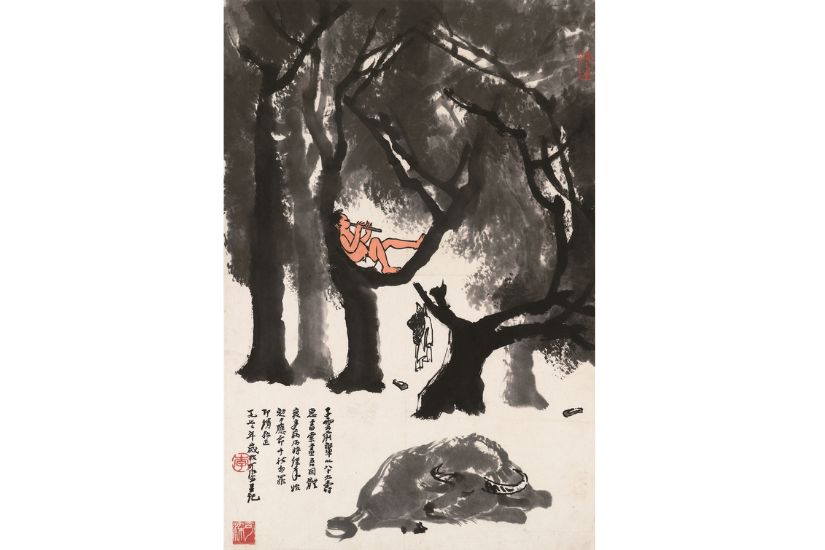
Li Keran sought inspiration from daily life and sketching, painting well-known, hardworking, and gentle cows. His work reflects the light and shadow techniques and sense of depth in Western painting. The exhibited work “Grazing Leisurely with a Flute” is an excellent example. Gao Qifeng advocates for the incorporation of Western realistic techniques, using the “collision of water and powder” and boneless techniques to paint “Moonlit Pine and Eagle,” creating a poetic scene that showcases the light and shadow techniques of Western painting while inheriting the expressive qualities pursued in traditional Chinese ink painting.
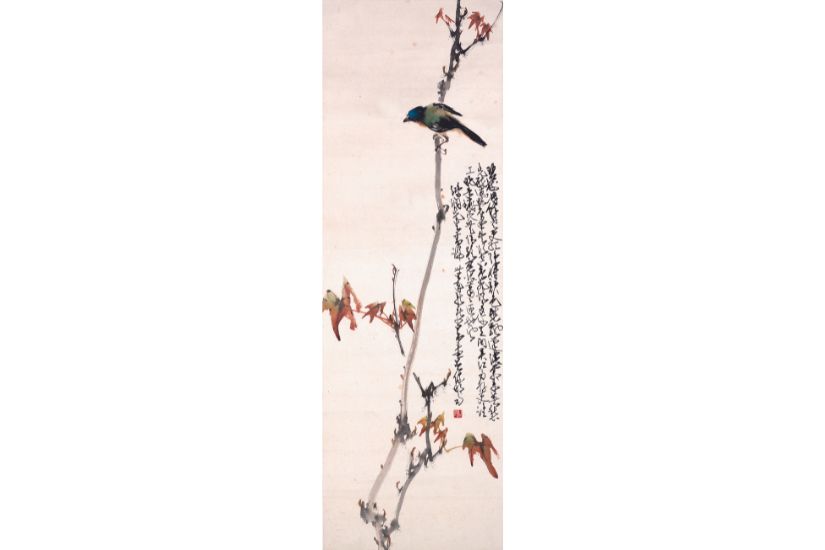
Zhao Shaoang excels in painting flowers and birds, especially in the use of color. He integrates sketching and brushwork into one, “Autumn Birds” achieves a perfect combination of form and spirit with the simplest brushwork, creating a poetic realm.
“Animals in Ink Wash”
Date: From now until December 22, 2022
Time: 10:00 AM to 6:00 PM
Location: Yixin Art Museum, 4th Floor, SML Building, 165 Kwun Tong Promenade, Kowloon, Hong Kong
Image source and learn more: Sun Museum

